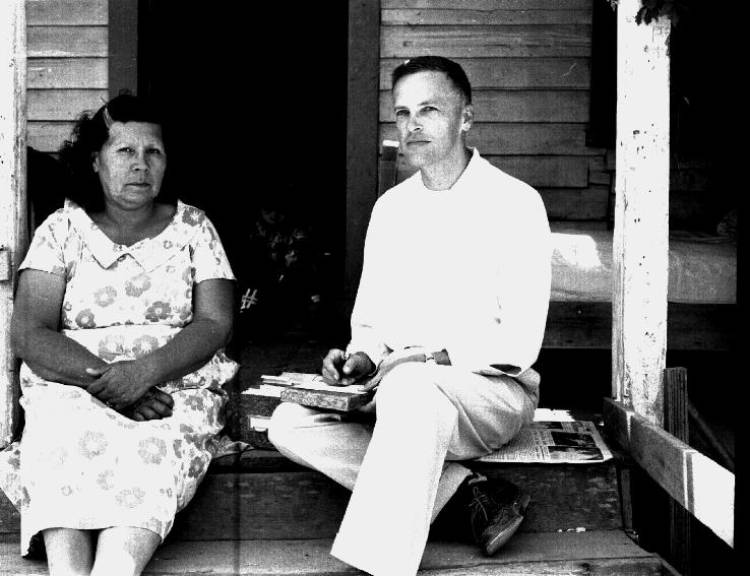Clerks Kashia Alphabet
Historically, the Kashia Language was primarily a spoken language without a written form until European and American contact. There was some written communication in the form of pictographs and petroglyphs, but not an alphabetical form of written language. Recognizing the importance of preserving their unique linguistic heritage, Kashia tribal members collaborated with outsiders to develop a written form of their oral language. This endeavor aimed to safeguard their unique language, cultural practices, and ancestral traditions from the risk of being lost or diminished.
Kashia is one of seven languages that comprise the Pomoan language family which was spoken across much of Northern California for thousands of years now before the arrival of the Europeans to the area. Other tribes linked to the same language group are Central Pomo, Eastern Pomo, Northeastern Pomo, Northern Pomo, Southeastern Pomo, and Southern Pomo.
The traditional Kashia language area is along the Pacific coast from north of Bodega Bay to Stewart’s Point and Annapolis. In pre-contact times, the Pomoan languages together probably had around 8,000 speakers, according to UC Berkeley. By the 20th century the language witnessed a substantial decline. In the late 1950's, Robert L. Oswalt, from Berkeley University, started working with the Kashia Pomo to preserve their language and culture. His work with Kashia spiritual leader, Essie Parish, led to the creation of the tribe's grammar and alphabet by Oswalt in 1961 and publication of the book, “Kashaya Texts” in 1964.

Robert Oswalt with Essie Parrish, 1960
“When I explained to Essie Parrish how I planned to record the language and stories, make a dictionary, write a grammar, she immediately thought that was something she wanted,” Oswalt once recalled.
In the 21st century, there are several dozen speakers of Kashia. Kashia is classified as "critically endangered" by the United Nations Educational, Scientific and Cultural Organization.
The Kashia language holds immense cultural and historical significance for the Kashia Band of Pomo Indians, who have been and remain the original inhabitants of this region for thousands of years. This ancient language serves as a gateway to understanding a community's unique heritage, values, and worldview. By preserving and studying the Kashia language, we can gain insights into their traditions, stories, and rich oral history.
Furthermore, language preservation fosters respect for diverse cultures and promotes inclusivity, helping to counteract the erosion of indigenous languages and cultures. By engaging with the Kashia language at Fort Ross State Historic Park, we hope to contribute to the ongoing efforts of language revitalization and ensure that the legacy of the Kashia people endures for future generations.
Below you will find a list of useful links and information to help you get acquainted with Kashia language - a language that has been spoken at Metini for thousands of years.
You can begin by familiarizing yourself with Kashia sounds and grammar before learning some of the vocabulary. This way of writing Kashia was created by Oswalt in 1961.

Additional References:
Kashaya Online - Use this link to try learning to say 1 through 10 in Kashia (also spelled Kashaya). University of Pennsylvania’s Department of Linguistics developed an online resource of sound recordings of Kashia words as pronounced by eight different native speakers. This website Includes all the texts published by Oswalt 1964, with sound recordings for most of them. Intended for learning vocabulary and pronunciation.
Kashaya Sounds This University of Pennsylvania’s resource has recordings of the vowels and consonants of Kashia, to help in learning correct pronunciation.
Rabbit & Elk – A Kashia Pomo Story, read by a native speaker and animated by San Jose State University students